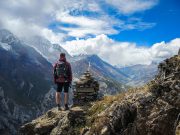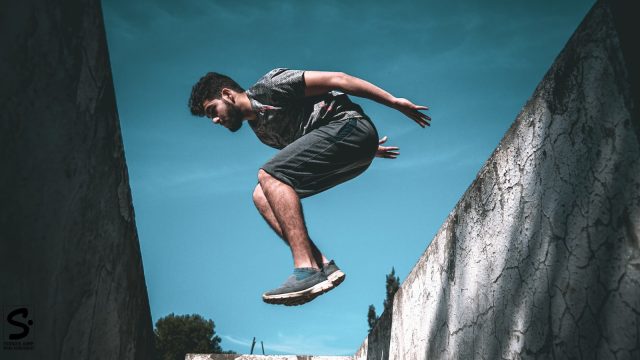Welcome to the world of freerunning! Freerunning, also known as parkour, is a discipline that combines running, jumping, climbing, and acrobatics to move fluidly through an environment. It is a beautiful and exciting form of movement that challenges both the body and mind.
If you are new to freerunning and want to explore this thrilling discipline, this guide is for you. This beginner’s guide will cover the basics of freerunning, including its history, philosophy, and techniques. We will also provide tips and advice to help you get started, stay safe, and progress in your practice.
Whether you are an athlete looking for a new challenge, a fitness enthusiast seeking a fun and creative way to stay active, or simply someone who loves movement and adventure, freerunning has something for everyone. So, let’s dive into the freerunning world and discover the movement’s beauty and flow!
What is Freerunning?
Freerunning, also known as parkour, is a physical discipline and a form of movement that emphasizes efficient and creative ways to overcome obstacles using only the human body. It involves running, jumping, vaulting, climbing, and other acrobatic movements to move through urban environments fluidly and seamlessly.
Freerunning was developed in France in the late 1980s by David Belle and his friends, who were inspired by the movements of military obstacle course training and other physical disciplines. They sought to develop a new form of movement that could help individuals to overcome obstacles in urban environments safely and efficiently.
Since then, freerunning has become a popular global movement with practitioners worldwide. It has been featured in movies, television shows, and advertisements and has even been incorporated into some military and law enforcement training programs.
One of the core principles of freerunning is the idea of “flow,” which refers to the ability to move through an environment continuously and seamlessly without losing momentum or rhythm. This requires a combination of physical strength, agility, mental focus, creativity, and adaptability.
Freerunning is often practiced in urban environments such as parks, rooftops, and abandoned buildings, but it can also be adapted to other environments such as forests, mountains, and beaches. It is a highly individualized activity, with each practitioner developing their own unique style and approach to movement.
While freerunning can be a highly rewarding and exhilarating activity, it is also physically demanding and carries some risk of injury. As such, practitioners need to receive proper training and always prioritize safety when practicing.
Basics: Essential Skills
Freerunning, also known as parkour, is a physical discipline that involves moving through urban environments by efficiently and creatively overcoming obstacles using only the human body. Here are some essential skills that are important to master in freerunning:
- Precision jumping: This involves jumping accurately and landing precisely on a target, such as a wall, rail, or ledge. Precision jumping is an essential skill in freerunning, allowing practitioners to move quickly and efficiently through urban environments.
- Wall climbing: Freerunners often use walls as a way to gain height and overcome obstacles. Wall climbing requires strength, balance, and coordination to maintain control while moving up a vertical surface.
- Rolling: Rolling is an important technique for absorbing impact and landing safely after jumps or falls. It involves tucking the body and rolling on the ground to disperse the force of the landing.
- Vaulting involves using the hands or feet to propel the body over an obstacle, such as a wall or rail. There are many different types of vaults, including the speed vault, kong vault, and lazy vault, each of which requires different skills and techniques.
- Flow: Flow is the ability to continuously and seamlessly through an environment without losing momentum or rhythm. It requires physical strength, agility, mental focus, creativity, and adaptability.
- Spatial awareness: Spatial awareness involves being able to judge distances, angles, and heights accurately, as well as to anticipate potential obstacles and hazards in the environment.
- Safety: Safety is paramount in freerunning, as the discipline can be physically demanding and carries some risk of injury. Practitioners must always prioritize safety by practicing in controlled environments, using proper techniques, and wearing appropriate protective gear.
By mastering these essential skills, freerunners can build a strong foundation for learning and improving in the discipline. Whether you are a beginner or an experienced practitioner, it is important to always focus on developing and refining these basics to continue making progress and achieving your goals in freerunning.
Training Tips for Freerunning
Training is essential for mastering the essential skills in freerunning. Here are some training tips to help you optimize your freerunning practice and reach your goals:
- Warm up and stretch: Warming up and stretching is important to prevent injury and prepare your body for the physical demands of freerunning. Focus on dynamic stretches that mimic the movements you will be doing in your practice.
- Start with the basics: Focus on mastering the essential skills in freerunning, such as precision jumps, wall climbs, and vaults. Develop a strong foundation in these skills before moving on to more advanced techniques.
- Train all aspects of fitness: Freerunning requires a combination of strength, agility, balance, and endurance. Make sure your training plan includes exercises and drills that target all these aspects of fitness. Practice in a safe environment: Freerunning can be dangerous, so it’s important to practice in a safe environment with proper equipment and safety measures. Start with low-risk environments and gradually work your way up to more challenging locations.
- Learn from others: Freerunning is a community-driven discipline, so take advantage of opportunities to learn from other practitioners. Attend workshops, join local training groups, and watch videos of other freerunners to learn new techniques and get inspired.
- Set goals and track progress: Setting specific goals and tracking your progress can help you stay motivated and focused. Make sure your goals are realistic and measurable, and celebrate your achievements.
Be patient and persistent: Freerunning requires a lot of practice and patience to master. Don’t get discouraged if progress is slow; keep working consistently towards your goals. These training tips can optimize your freerunning practice and improve your skills. Always prioritize safety and practice in a controlled environment to prevent injury.
Safety Considerations
Overcoming Fear & Taking Flight
Freerunning can be an exciting discipline but can also be intimidating and scary, especially when facing new challenges or obstacles. Here are some tips for overcoming fear and taking flight when freerunning:
- Start small: When facing a new obstacle or challenge, start with a smaller or simpler version. This will help you build confidence and gradually move to more challenging movements.
- Visualize success: A visualization is a powerful tool for building confidence and overcoming fear. Visualize yourself successfully completing the movement or obstacle before attempting it.
- Use positive self-talk: Negative self-talk can sabotage your confidence and make you doubt your abilities. Use positive self-talk to encourage yourself and build confidence.
- Train systematically: Systematic training can help you break down complex movements into smaller, more manageable parts. This can help you build confidence and reduce the risk of injury.
- Practice falling: Falling is an inevitable part of freerunning but can be scary and intimidating. Practicing falling can help you develop the skills and confidence to handle unexpected situations and reduce the risk of injury.
- Seek out support: Surround yourself with supportive and encouraging people who share your passion for freerunning. Join a local training group, attend workshops, or connect with other freerunners online to build a supportive community.
- Challenge yourself: Pushing yourself outside your comfort zone is essential to freerunning. Set goals and challenge yourself to take on new obstacles and movements to build confidence and improve your skills.
Following these tips, you can overcome fear and take flight when freerunning. Always prioritize safety and practice in a controlled environment to prevent injury. With patience, practice, and persistence, you can push your limits and achieve your goals in freerunning.
Conclusion: Flowing with Movement
Freerunning is a discipline that requires a unique blend of physical skill, creativity, and mental focus. Practitioners of freerunning strive to flow seamlessly from one movement to the next, combining precision, power, and grace in a fluid and dynamic way.
Whether you are just starting out or are a seasoned freerunner, there are always new challenges to overcome and new skills to master. By following a structured training plan, prioritizing safety, and pushing yourself outside your comfort zone, you can improve your skills and achieve your goals in freerunning.
But freerunning is not just about physical skill. It is also about creativity, self-expression, and the joy of movement. By tapping into your creativity and exploring your own unique style, you can develop a deeper connection to the discipline and find new ways to express yourself through movement.
Ultimately, freerunning is about flowing with movement, letting go of fear and self-doubt, and allowing yourself to fully embrace the present moment. By embracing these principles, you can experience the joy and freedom that comes from moving your body in new and unexpected ways.






























